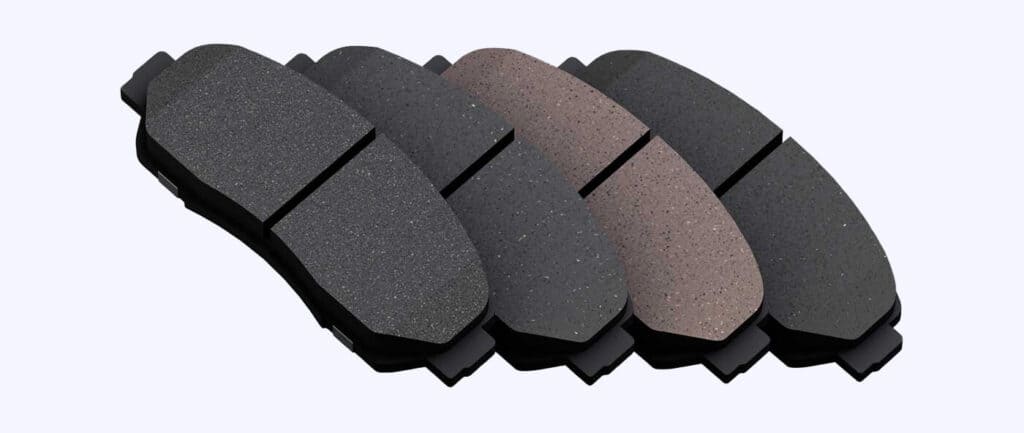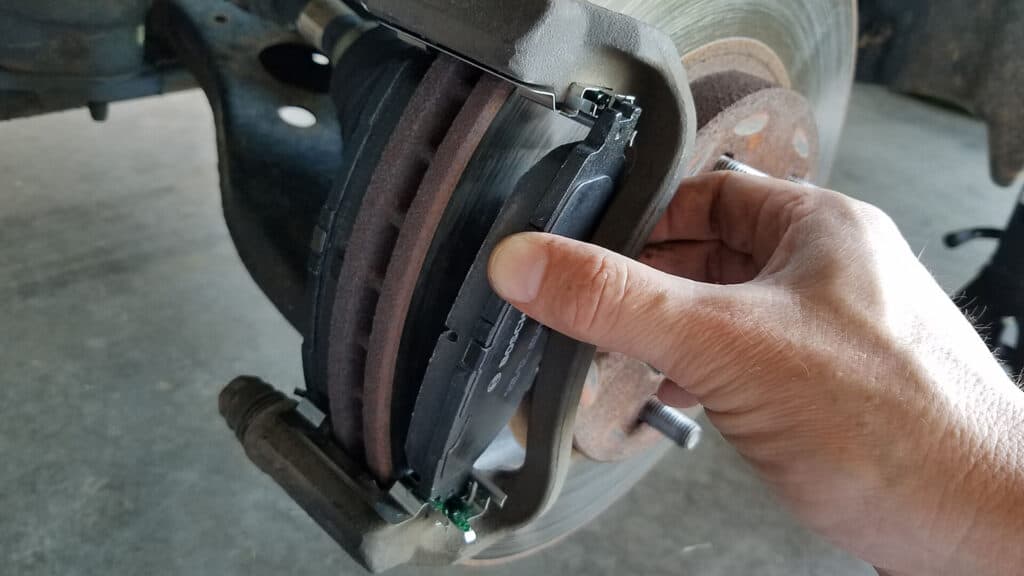Introduction: The Importance of Choosing the Right Brake Pad Material for Your Fleet
Selecting the right brake pad material for your fleet is crucial to ensuring optimal braking performance, safety, and cost-efficiency. With various materials available, each offering unique advantages and disadvantages, understanding their differences can help you make an informed decision tailored to your fleet’s specific requirements.
Organic Brake Pads: A Budget-Friendly Option for Light-Duty Fleets
Organic brake pads, made from a combination of natural fibers, resins, and fillers, are an affordable option suitable for light-duty fleets. They are known for their low noise levels and smooth braking performance, making them a popular choice for passenger cars and smaller commercial vehicles.
Pros of Organic Brake Pads for Fleet Vehicles
Organic brake pads offer several benefits, including their low cost, which can be especially advantageous for fleet managers on a tight budget. They also tend to produce less noise and dust compared to other materials, making them a more comfortable and cleaner choice.
Cons of Organic Brake Pads for Fleet Vehicles
Despite their advantages, organic brake pads have some drawbacks. They wear out faster than other materials and may not provide the same level of performance under heavy loads or high temperatures. This makes them less suitable for larger, heavier vehicles or those that frequently operate in demanding conditions.

Semi-Metallic Brake Pads: A Balance of Performance and Durability for Mixed Fleets
Semi-metallic brake pads contain a mixture of metals and other materials, offering a balance between performance and durability. These pads provide better heat dissipation and improved braking performance compared to organic pads, making them ideal for medium to heavy-duty fleet vehicles.
Pros of Semi-Metallic Brake Pads for Fleet Vehicles
Semi-metallic brake pads provide better heat dissipation and improved braking performance compared to organic pads, particularly under heavy loads or high temperatures. They also tend to last longer, reducing the frequency of brake pad replacements.
Cons of Semi-Metallic Brake Pads for Fleet Vehicles
The downsides of semi-metallic brake pads include increased noise, more brake dust, and potential rotor wear. Additionally, they may not provide optimal performance at low temperatures.
Ceramic Brake Pads: Top Performance for a Premium Price in High-Performance Fleets
Ceramic brake pads, made from a blend of ceramic fibers and non-ferrous fillers, offer top-of-the-line performance for high-performance fleets. With excellent heat resistance, low noise levels, and minimal dust production, these pads are a premium choice for fleets that require superior braking capabilities.
Pros of Ceramic Brake Pads for Fleet Vehicles
Ceramic brake pads excel in terms of performance, producing less noise and dust compared to semi-metallic and organic pads. They also offer excellent heat dissipation and are less prone to fade under extreme conditions, making them well-suited for demanding driving situations.
Cons of Ceramic Brake Pads for Fleet Vehicles
The primary drawback of ceramic brake pads is their higher cost. Additionally, they can cause increased wear on brake rotors, which may lead to more frequent rotor replacements.
Factors to Consider When Choosing Brake Pad Materials for Your Fleet
When choosing brake pad materials for your fleet, several factors must be taken into account to ensure optimal performance and safety. Vehicle types and weights play a crucial role, as different brake pad materials may be better suited for light-duty or heavy-duty vehicles. The right material can provide the necessary braking power and durability based on the specific demands of your fleet.
Driving conditions and style also significantly impact the selection of brake pad materials. Frequent stop-and-go traffic or harsh driving environments may require more robust materials that can handle increased wear and tear. On the other hand, fleets operating under less demanding conditions may benefit from more budget-friendly options.
Lastly, consider your fleet’s budget and maintenance requirements when selecting brake pad materials. While some materials may offer superior performance, they might also come with higher upfront costs or more frequent maintenance needs. Striking a balance between performance, durability, and cost is essential to ensure the long-term success of your fleet’s brake systems.
The Role of Brake Rotors in Your Fleet’s Braking Performance
Brake rotors are an essential component in your fleet’s braking system, working together with the brake pads to create the friction needed to stop your vehicles. Matching the right brake pad material to the appropriate rotor type is critical for optimizing fleet performance and safety.

Matching Your Brake Pads and Rotors for Optimal Fleet Performance
Pairing compatible brake pads and rotors ensures efficient braking performance, reduced wear, and increased safety. Consult your fleet maintenance provider or brake component manufacturer for recommendations on suitable pad and rotor combinations for your vehicles.
The Importance of Regular Fleet Brake Maintenance and Inspections
Regular brake maintenance and inspections are vital for maintaining fleet safety and performance. By adhering to a routine maintenance schedule, you can prevent potential accidents, reduce downtime due to unforeseen brake issues, and extend the life of your brake components. Additionally, regular inspections can help identify problems early on, allowing you to address them before they escalate into costly repairs.
Conclusion: Make an Informed Decision on Brake Pad Materials for Your Fleet’s Needs
Choosing the right brake pad material for your fleet vehicles is a critical aspect of fleet management. Each material—organic, semi-metallic, and ceramic—offers unique advantages and disadvantages that need to be considered based on your fleet’s specific requirements. Factors such as vehicle type, driving conditions, budget, and maintenance needs should guide your decision-making process.
By weighing the pros and cons of each brake pad material and understanding how they interact with your brake rotors, you can make an informed choice that will optimize your fleet’s braking performance, ensure safety, and minimize long-term costs. Regular brake maintenance and inspections are also essential in maintaining optimal brake system health and preventing accidents. By investing time and resources into selecting the appropriate brake pad material and adhering to a routine maintenance schedule, you can improve overall fleet safety and efficiency.
